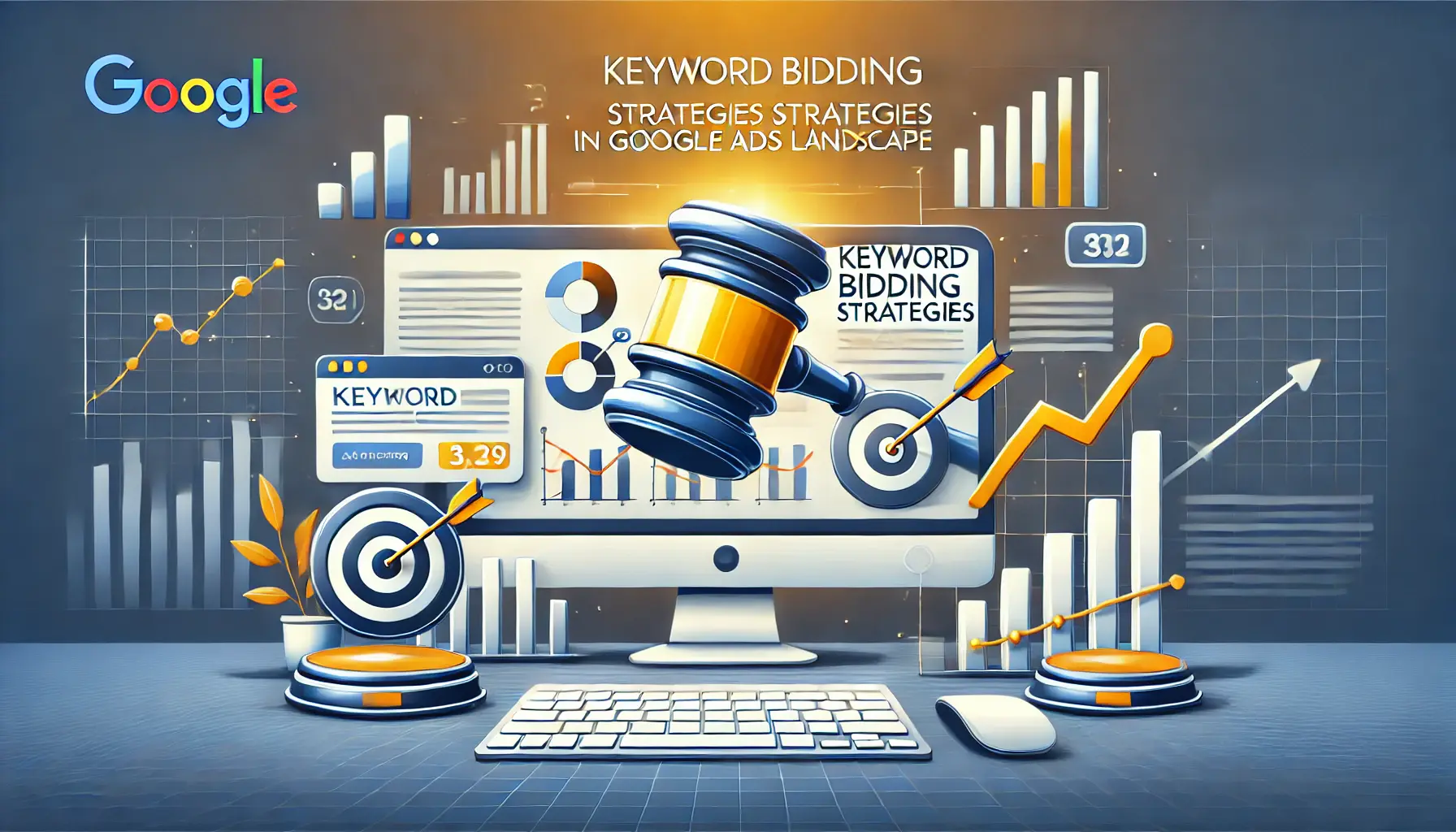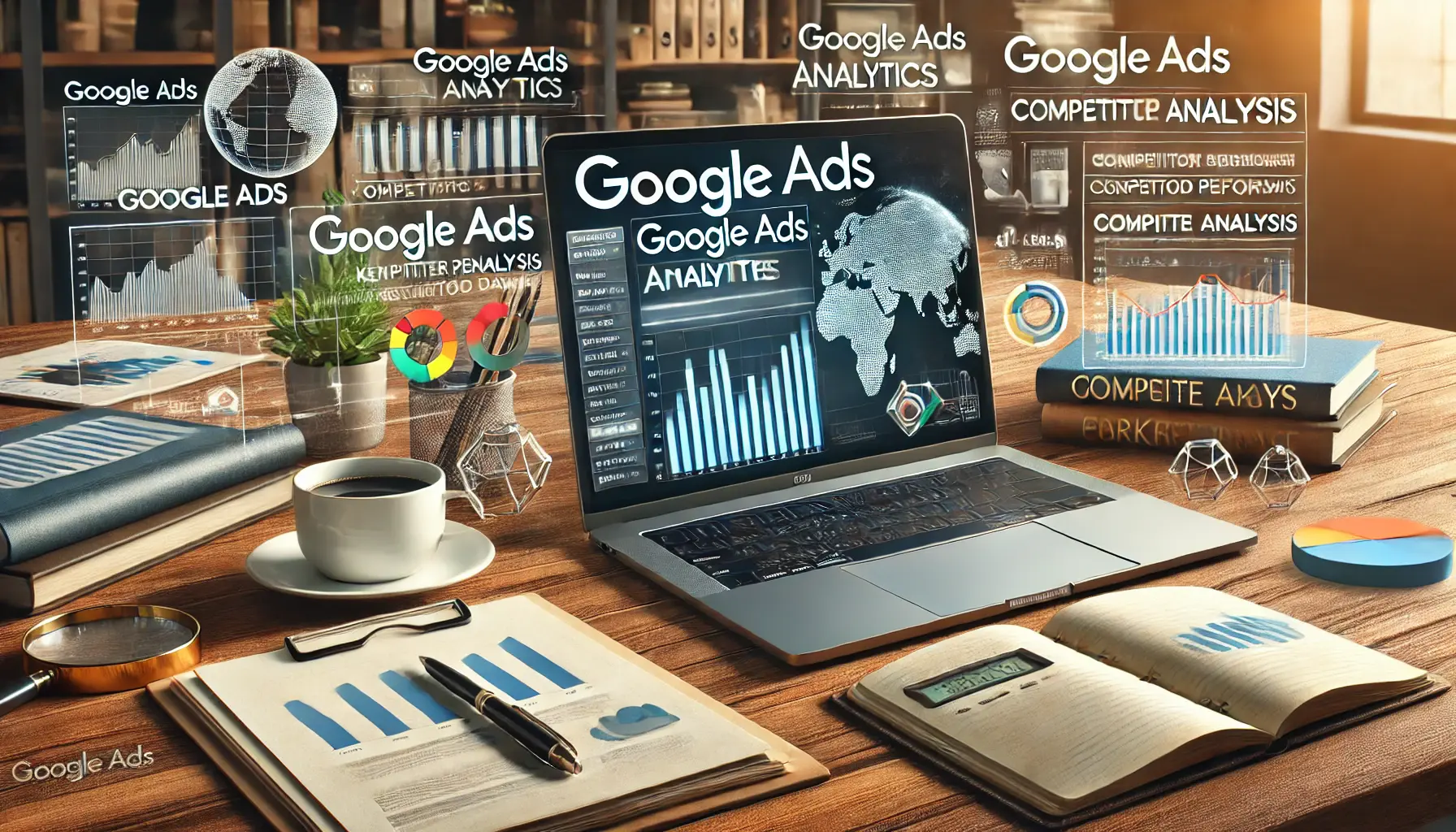In this fast-moving world of digital advertising, being ahead means using the latest tools and updates.
Google Ads is one of the most powerful platforms in this regard, continuously improving to provide advertisers with superior insights and controls.
The recent reporting enhancements in Google Ads have revolutionized how businesses track performance and optimize campaigns.
These updates are not just minor tweaks; they are game-changing features designed to empower advertisers with precision and clarity.
If you’ve been wondering how to elevate your campaign strategy, understanding these reporting enhancements is your first step.
- Introduction to Google Ads Reporting Enhancements
- Key Features of the New Reporting Landscape
- Leveraging AI in Reporting Enhancements
- Impact on Advertisers and Campaign Performance
- What’s Next: Future Reporting Coming to Google Ads
- Conclusion: Embracing Google Ads Reporting Enhancements
- Frequently Asked Questions on Google Ads Reporting Enhancements
Introduction to Google Ads Reporting Enhancements
Google Ads Reporting Enhancements have given a whole new dimension to how advertisers analyze their campaigns.
The changes are oriented to meet the demands of an increasingly competitive market where data-driven decisions can make or break a strategy.
To start, let’s explore what makes these enhancements so impactful.
At their core, these updates focus on providing detailed, actionable insights.
They aim to help you pinpoint what’s working in your campaigns and identify areas that need improvement.
This means less guesswork and more targeted actions to achieve your advertising goals.

Analyzing recent reporting updates to optimize digital advertising campaigns.
Overview of Recent Reporting Updates
The latest updates to Google Ads reporting have introduced several key features:
- Asset-Level Reporting: This enables advertisers to identify how particular assets—headlines or images—drive conversions to their end goals.
- YouTube Placement Insights: Detailed transparency into where your video ads are being shown.
- Third-Party Integration: Enhanced brand safety measures with verification tools from trusted partners.
These updates provide more granular control over campaign performance, enabling businesses to refine their strategies with much more ease.

A team of professionals collaborating on optimizing campaign performance through enhanced reporting tools.
Importance of Reporting Enhancements in Campaign Management
Accurate reporting is the backbone of any successful advertising strategy.
With these enhancements, Google Ads sets a new standard in managing and optimizing campaigns.
Here’s why these updates matter:
- Better Resource Allocation: By understanding what elements drive results, you will be able to focus your budget and efforts where they matter most.
- Smarter, Faster Decisioning: Clearer insights lead to smarter, faster decisions.
- Better ROI: With correct data, you can get the best returns on money spent on advertising.
As you delve deeper into these reporting tools, you will realize that they not only make complex data simple to understand but also give you the confidence to make strong decisions.
The next step is to understand the new features of this reporting landscape, which we will explain in the next section.
Google Ads Reporting Enhancements aim to minimize guesswork by providing detailed and actionable insights, ensuring advertisers can make precise, data-driven decisions.

Analyzing key features of the new reporting landscape in a collaborative digital workspace.
Key Features of the New Reporting Landscape
Google Ads has introduced several reporting enhancements that provide advertisers with more detailed insights and control over their campaigns.
These features are designed to help you understand your ad performance better and make informed decisions to optimize your strategies.

Analyzing asset-level conversion metrics to optimize campaign performance.
Asset-Level Reporting for Conversion Metrics
One of the significant updates is asset-level reporting, which allows you to see how individual assets—such as headlines, images, and videos—contribute to your campaign’s conversions.
This granular insight enables you to identify which creative elements resonate most with your audience, facilitating more effective optimization of your ad components.

Evaluating YouTube video ad placements to ensure transparency and performance optimization.
YouTube Video Placement Transparency
Transparency in ad placements is crucial for brand safetyMeasures taken to ensure advertisements appear in suitable and non-offensive contexts. and performance assessment.
Google Ads now offers detailed reporting on where your video ads appear on YouTube.
This feature helps ensure that your ads are displayed in suitable contexts, allowing you to maintain brand integrity and assess the effectiveness of different placements.

Ensuring brand safety with third-party verification tools in a digital marketing workspace.
Third-Party Verification for Brand Safety
To further enhance brand safety, Google Ads has integrated third-party verificationThe use of independent organizations to validate or ensure compliance with specific standards or requirements. tools.
These tools independently validate your ad placements against your safety standards.
By leveraging these verification services, you can confidently run your campaigns, knowing your ads are appearing in appropriate environments.
These reporting enhancements position you to make data-driven decisions, optimize your ad assets, and maintain control over where your ads will display, ultimately making your ad campaigns more effective and efficient.
- Asset-Level Reporting enables advertisers to analyze creative performance in granular detail.
- YouTube Placement Transparency enhances brand safety by showing where ads are displayed.
- Third-Party Verification tools safeguard ad placements in trusted environments.

Leveraging AI technology for enhanced reporting and data-driven decision-making in digital marketing.
Leveraging AI in Reporting Enhancements
Artificial Intelligence (AI) has become a cornerstone in digital advertising, revolutionizing how campaigns are managed and optimized.
Google Ads has integrated AI into its reporting tools, providing advertisers with advanced features to enhance campaign performance.
Let’s explore how you can leverage these AI-driven reporting enhancements to your advantage.

Using generative AI tools to create digital assets in a collaborative workspace.
Generative AI Tools for Asset Creation
Google Ads now introduces generative AIA type of artificial intelligence that creates content such as text, images, or videos based on input data. capabilities, which help create various forms of high-quality creative assets.
These tools can automatically generate images and videos tailored to your campaign needs, streamlining the creative process.
By applying AI-generated assets, you maintain consistency across your campaigns and better engage your audience.

AI-powered image editing in action: advanced tools for seamless visual adjustments.
AI-Powered Image Editing Capabilities
The platform’s AI-powered image editing features enable you to modify visuals directly within Google Ads.
You can add or remove objects, adjust backgrounds, and customize images to fit various ad formats.
This flexibility ensures that your creative assets are optimized for performance across different channels.

Optimizing Performance Max campaigns with AI-driven performance metrics and real-time data.
Integration of AI in Performance Max Campaigns
Performance Max campaigns automatically optimize budget and bidding across all Google channels to provide maximum conversion.
With the integration of AI in these campaigns, advertisers benefit from real-time adjustments based on performance data, ensuring that your ads reach the right audience at the perfect moment.
This AI-driven approach ensures greater efficiency and effectiveness in achieving advertising goals.
By embracing such AI-powered reporting enhancements, you gain deeper insights into your campaign performance, streamline your creative processes, and achieve improved results in your advertising efforts.
AI-driven tools, such as generative AI for asset creation and Performance MaxA Google Ads campaign type that uses machine learning to optimize budgets and bidding across all channels for maximum conversions. optimization, streamline processes and boost campaign effectiveness through advanced automation.

Assessing the impact of campaign performance on advertisers through detailed data analysis.
Impact on Advertisers and Campaign Performance
The recent reporting enhancements in Google Ads have significantly influenced how advertisers manage and optimize their campaigns.
By providing more detailed insights and advanced tools, these updates empower you to make informed decisions that can enhance your advertising effectiveness.
Let’s delve into the key impacts:

Leveraging detailed insights for data-driven decision-making in digital marketing.
Improved Decision-Making with Detailed Insights
With access to granular data through features like asset-level reporting, you can:
- Identify High-Performing Assets: Determine which headlines, images, or videos drive the most conversions, allowing for targeted optimizations.
- Understand Audience Engagement: Analyze how different segments interact with your ads to tailor your messaging effectively.
- Monitor Campaign Performance: Track real-time metrics to swiftly adjust strategies and improve outcomes.

Ensuring brand safety in digital advertising through advanced analytics and verification tools.
Enhanced Brand Safety Measures
Ensuring your ads appear in appropriate contexts is crucial.
The integration of third-party verification tools offers:
- Verified Ad Placements: Confirm that your ads are displayed on platforms that align with your brand values.
- Protection Against Inappropriate Content: Safeguard your brand from associations with unsuitable material.
- Increased Consumer Trust: Maintain a positive brand image by controlling ad environments.

Optimizing ad campaigns with advanced reporting tools and performance data analysis.
Optimizing Campaigns with Advanced Reporting Tools
The AI-driven enhancements in Google Ads facilitate campaign optimization by:
- Automating Creative Creation: Generative AI can quickly and efficiently create high-quality creatives.
- Simplifying Image Editing: Leverage AI-powered tools in the platform to tailor-make visuals.
- Optimizing Performance Max Campaigns: Drive conversions with maximum efficiency by using AI that automates budgets and bidding across all Google channels.
These enhanced reporting capabilities will help you allocate resources more effectively, make better decisions, and improve the return on your investment.
Staying up-to-date with these tools and integrating them into your advertising strategy are critical to sustaining your competitive advantage in this fast-changing digital environment.
- Granular insights empower better decision-making.
- Enhanced brand safety ensures ads align with brand values.
- AI tools optimize creative processes and campaign performance.

Exploring the future of reporting with advanced tools and predictive insights in a digital marketing workspace.
What’s Next: Future Reporting Coming to Google Ads
As digital advertising keeps changing, Google Ads is dedicated to ensuring that advertisers have the most advanced tools to help them improve campaign performance.
In this respect, knowing future reporting enhancements will help you stay competitive.
Some of the highly anticipated features include:

Monitoring real-time campaign performance and analytics in a collaborative digital marketing workspace.
Improved Real-Time Reporting
Google Ads plans to introduce more robust real-time reporting capabilities, allowing advertisers to access up-to-the-minute data on campaign performance.
This enhancement will enable you to make swift adjustments, ensuring your strategies remain effective in dynamic market conditions.

Harnessing advanced AI-driven insights to optimize decision-making in digital marketing.
Advanced AI-Driven Insights
Building upon existing AI integrations, future updates are expected to offer deeper insights through machine learningA subset of AI that enables systems to learn and improve from experience without being explicitly programmed. algorithms.
These enhancements aim to provide predictive analyticsThe use of statistical techniques and algorithms to forecast future events or behaviors based on historical data., helping you anticipate market trends and consumer behaviors, thereby informing proactive campaign adjustments.

Integrating third-party analytics platforms to optimize campaign insights and performance.
Integration with Third-Party Analytics Platforms
To facilitate a more comprehensive analysis of campaign data, Google Ads is working towards seamless integration with popular third-party analytics platforms.
This development will allow you to consolidate data from various sources, providing a holistic view of your advertising efforts.

Customizing reporting dashboards for tailored insights and campaign optimization.
Customizable Reporting Dashboards
Recognizing the diverse needs of advertisers, future enhancements will include customizable reporting dashboards.
This feature will give you the ability to personalize data visualization to your exact needs, making performance analysis more efficient.
By being aware of these upcoming enhancements in reporting, you are better positioned to take advantage of new tools that further refine your advertising strategies, ensuring better results and continued competitive advantages in the ever-changing digital landscape.
Upcoming updates like real-time reporting, AI-driven predictive analytics, and customizable dashboards promise even greater control and insight for advertisers.

Embracing the power of new Google Ads reporting enhancements for optimized digital marketing strategies.
Conclusion: Embracing Google Ads Reporting Enhancements
In the rapidly evolving world of digital advertising, staying ahead requires leveraging the most advanced tools and insights available.
Google Ads Reporting Enhancements have redefined how advertisers understand and optimize their campaigns, providing a powerful suite of tools that empower data-driven decision-making.
These innovations are not just about improving performance—they are about giving advertisers the precision and confidence needed to excel in a competitive landscape.

Understanding the impact of reporting enhancements on digital marketing decision-making.
Why Reporting Enhancements Matter
The introduction of features like asset-level reporting, AI-driven tools, and customizable dashboards represents a quantum leap in campaign optimization.
These new capabilities enable advertisers to:
- Gain deeper insights into campaign performance with real-time and predictive analytics.
- Ensure brand safety with verified ad placements and enhanced transparency.
- Streamline creative processes using AI-generated assets and advanced editing tools.

Strategically preparing for the future of digital marketing with advanced analytics and innovative tools.
Preparing for the Future
Looking ahead, Google Ads’ commitment to innovation promises even greater enhancements.
With improved real-time reporting, AI-driven insights, and integration with third-party analytics platforms on the horizon, advertisers must stay informed to harness these capabilities fully.
By doing so, they can refine their strategies, achieve better results, and maintain a competitive edge in a constantly changing market.

Reflecting on the final insights and conclusions to optimize digital marketing strategies.
Final Thoughts
In other words, embracing Google Ads Reporting Enhancements is no longer an option but an absolute necessity for success in digital advertising.
These tools will not only provide the required data to understand campaign performance but also give actionable insights to drive growth and efficiency.
As these features continue to evolve, advertisers who adopt and adapt will find themselves better equipped to navigate the complexities of the digital advertising landscape.
Adopting Google Ads Reporting Enhancements is essential for achieving precision and confidence in digital advertising, ensuring long-term success in a competitive market.

Collaborating to address frequently asked questions on Google Ads reporting enhancements in a high-tech workspace.
Your campaigns can be managed by an agency specialized in Google Ads, check out our service page.
Frequently Asked Questions on Google Ads Reporting Enhancements
As Google Ads continues to evolve, it’s important to stay informed about the latest updates and how they can impact your advertising strategies.
Here are some frequently asked questions about Google Ads Reporting Enhancements to help you navigate these changes effectively.
Google Ads Reporting Enhancements are recent updates designed to provide advertisers with more detailed insights and control over their campaigns, enabling data-driven decision-making and improved performance.
To access the new reporting features, log in to your Google Ads account, navigate to the ‘Reports’ section, and explore the available tools and options that have been updated with the latest enhancements.
Asset-level reporting refers to the feature that gives advertisers a deeper dive into ad components, like headlines, images, and videos, to show which creatives are working the most to drive results for your campaign.
Google Ads AI integration improves reporting by delivering predictive analytics, automated data analysis, and actionable insights that make it faster and easier to optimize your campaigns.
Yes, Google Ads allows you to customize reporting dashboards, enabling you to tailor data visualization to your specific needs and preferences for more efficient performance analysis.
Reporting enhancements provide deeper insights into campaign performance, allowing for more informed decisions, better resource allocation, and improved strategies, leading to enhanced campaign optimization.
While Google aims to make new features widely available, the rollout may be gradual.
It’s advisable to check your Google Ads account regularly for updates and access to new reporting features.









